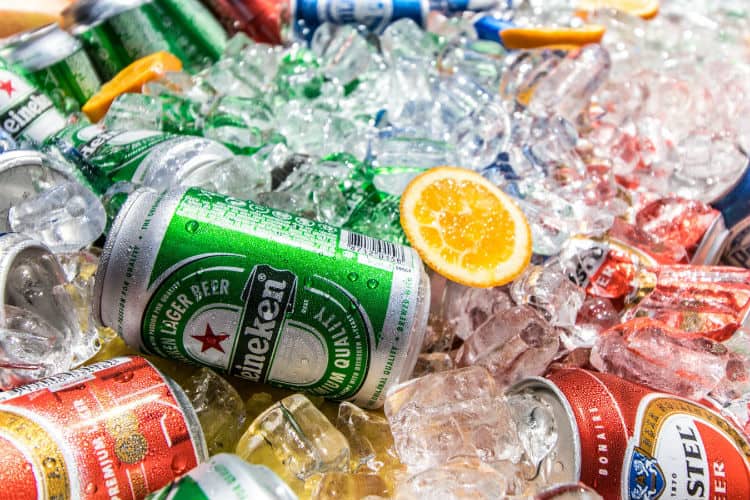
Basic Metals: Everyday Uses
August 19, 2020 - Emily Newton
Revolutionized is reader-supported. When you buy through links on our site, we may earn an affiliate commision. Learn more here.
We encounter different metals every single day, though some we may see more frequently than others. How many pieces of metal did you use this morning? The aluminum in your soda can? The stainless steel in your jewelry? The lithium and cadmium in your cell phone’s battery?
Metal is everywhere, and today we’re going to take a closer look at the basic metals. Also known as poor metals, you probably encounter quite a few of these in your daily life.
Basic Metals Properties
The basic metals sit to the right of the transitional metals on the periodic table, which also earns them the name post-transitional metals. This group includes:
| Common Basic Metals | Common Basic Metals (cont.) | Uncommon Basic Metals |
|---|---|---|
| Aluminum | Thallium | Flerovium |
| Gallium | Nihonium | Moscovium |
| Indium | Lead | Livermorium |
| Tin | Bismuth | Moscovium |
Aluminum is the third most common element on the planet, coming in behind oxygen and silicon. Gallium, lead, tin and thallium come next, followed by indium and bismuth.
Occasionally, you will see zinc, cadmium and mercury classified as basic metals, even though they belong to the transitional metals category. You may also see germanium and antimony included in this group as well, even though these elements are classified as metalloids.
Chemical and Physical Traits
Most basic metals share many of the same characteristics. They’re general solid under most conditions, though they’re softer than transitional metals and have lower boiling and melting points. Gallium’s melting point is so low that it will melt in the palm of your hand!
Each of these metals is also very malleable, or easily shaped, and most tend to be good conductors of both heat and electricity. They are the most electronegative metals, meaning they tend to acquire electrons and form negative ions, but the least reactive of all the metals.
Real-Life Applications
Where might you encounter these elements in your daily life? Check out this basic metals list to learn more about each element.
Aluminum
Aluminum is probably the element we’re most familiar with. It dates back to the Roman empire. Pliny the Elder wrote about a metal that looked like silver but was far too light. This is the first recorded reference to what is presumably aluminum. It’s also one of the most versatile elements on our list and one you’re likely to encounter a lot in your daily life.
Uses for Aluminum
- Automotive parts: Aluminum is incredibly lightweight and malleable, making it a popular choice for building automobiles. While it might not be as strong as steel, it’s taken the place of the heavier metal, lowering overall weight and improving fuel economy.
- Soda cans: This is probably the application for aluminum that you’re most familiar with. Soda, fruits, vegetables and other foodstuffs used to get packed in glass or tin. Today, aluminum is the most popular choice for long-term food storage.
- Alloys: Aluminum alloys easily with a variety of different metals, such as copper, silicon, tin, zinc and magnesium. These alloys enhance aluminum’s natural properties and increase the number of potential applications in the industrial sector.
Gallium and Indium
Gallium is fun to play with. It looks like mercury in its molten form, but it’s nontoxic. It also has a low melting point — around 85 degrees F — so if you get your hands on a chunk of galium, you can melt it with your body heat. Indium has many of the same applications as gallium and will melt at room temperature when alloyed with the former. Despite its low melting point, there are a few practical applications for this basic metal
Uses for Gallium
- Semiconductors: It might be liquid at room temperature, but when you chill it down to 6.4 K — or -448.15 F — it becomes a superconductor.
- Mirrors: Gallium is naturally incredibly shiny, so it’s popular for use in mirrors. It replaces mercury, which was the primary choice for mirrors. Due to its toxicity, manufacturers made the switch to gallium and aluminum.
- Pranks: Hand someone a gallium spoon to stir their coffee and watch the look on their face when it melts away. It’s nontoxic, so the coffee will still be safe to drink.
Tin
Widespread use of tin dates back to 1810, but we’ve been using it since around 3,500 B.C. to create bronze. When Mesopotamian smiths discovered that copper and tin bonded to create stronger metals, it marked the beginning of the Bronze Age and the next era of human advancement. We don’t use this basic metal as much anymore, but it still has its uses.
Uses for Tin
- Bronze: Bronze is a strong alloy of copper and tin. Ancient smiths and artisans turned it into everything from swords, shields and armor to jewelry and accents. Today, bronze is more decorative than anything.
- Anti-corrosive coatings: Tin doesn’t corrode naturally, so that makes it a perfect choice for anti-corrosion coatings for metals like steel and iron.
- Stainless Steel — Tin is also added in trace amounts to austenitic stainless steel, lending it’s anti-corrosive properties to the alloy.
Lead
Lead is another metal that dates back to the earliest human civilizations. Ancient Romans used it for everything from water pipes to lining bathtubs. It’s a dense basic metal that is toxic if you eat it, but you probably encounter it in your daily life more often than you might think.
Uses for Lead
- Radiation shielding: Those heavy vests you wear when getting an X-ray have lead in them to shield your organs from radiation. Lead of various thicknesses serves as one of the most effective materials for doing this.
- Batteries: Large batteries like the ones you find in a car or truck use lead plates, along with an electrolyte solution to hold a charge.
- Fishing and dive weights: Lead is so dense and heavy that it’s often used for fishing and dive weights.
Bismuth and Thallium
Bismuth dates back to the 1400s, but for the first few centuries, smiths confused it with lead because both metals are soft and have a relatively low melting point. On the other hand, thallium’s discovery was nearly accidental. A researcher was looking for tellurium and found thallium instead. Both bismuth and thallium have a few applications, though they aren’t as useful as they used to be.
Uses for Bismuth and Thallium
- Pepto-Bismol: The pink antacid liquid in your medicine cabinet works because it includes bismuth in the ingredients list.
- Fire extinguishers: Bismuth is often included in fire extinguishers and fire-detecting equipment.
- Medicine: One of thallium’s isotopes — thallium-201 — can help cardiologists monitor your heart function and detect any existing problems.
Other Elements
The other four elements on our list — nihonium, flerovium, moscovium and livermorium — are all short-lived radioactive elements that are created in a lab and have no other applications beyond lab research.
And there you have it — everyday uses for the basic or post-transitional metals. Are you surprised by how many of these metals you use every day without realizing it? The next time you successfully start your car or crack open a cold soda or beer, make sure you think of the basic metals that make up that can.
This article originally published 06/07/2018. We updated it on 08/19/2020 to expand the section of Real Life Applications with more in-depth uses of basic metals.
Revolutionized is reader-supported. When you buy through links on our site, we may earn an affiliate commision. Learn more here.
Author
Emily Newton
Emily Newton is a technology and industrial journalist and the Editor in Chief of Revolutionized. She manages the sites publishing schedule, SEO optimization and content strategy. Emily enjoys writing and researching articles about how technology is changing every industry. When she isn't working, Emily enjoys playing video games or curling up with a good book.




